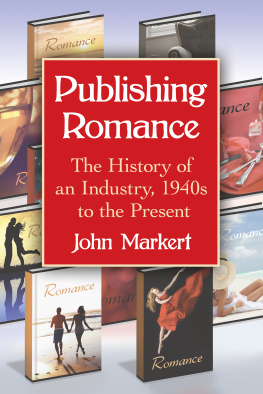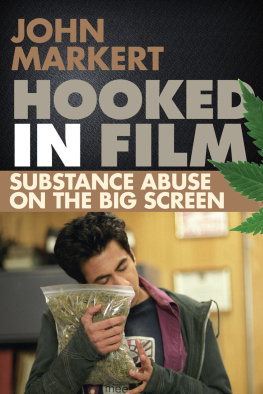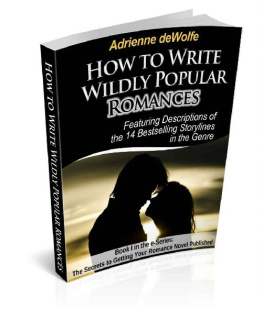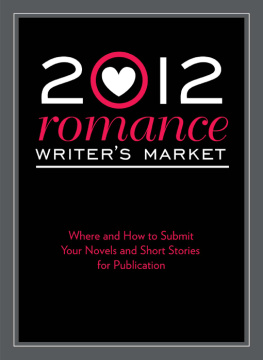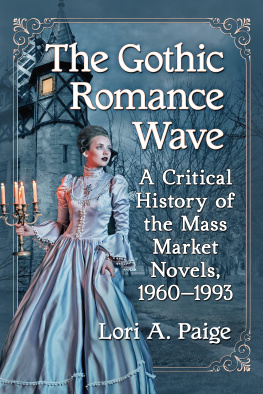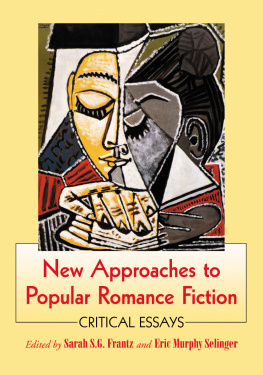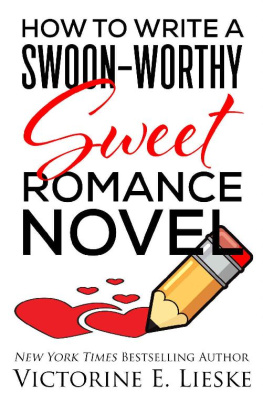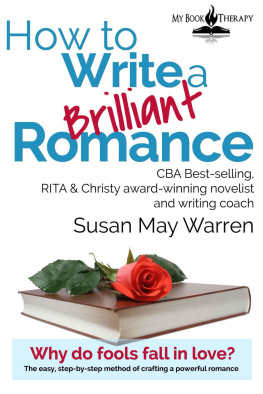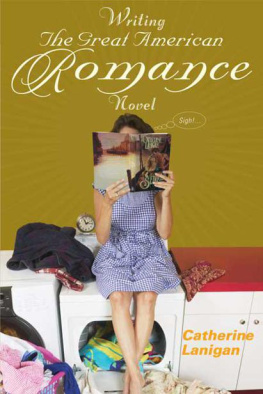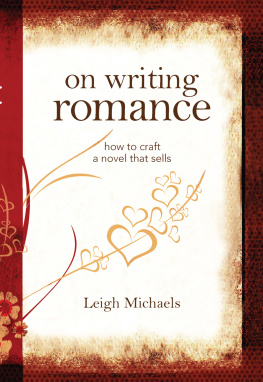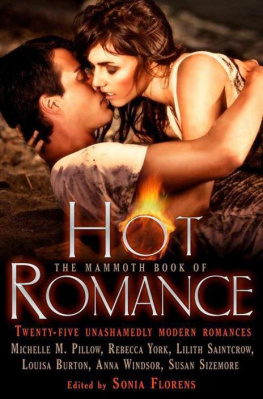
Publishing Romance
The History of an Industry, 1940s to the Present
John Markert

McFarland & Company, Inc., Publishers
Jefferson, North Carolina
LIBRARY OF CONGRESS CATALOGUING DATA ARE AVAILABLE
BRITISH LIBRARY CATALOGUING DATA ARE AVAILABLE
e-ISBN: 978-1-4766-2124-1
2016 John Markert. All rights reserved
No part of this book may be reproduced or transmitted in any form or by any means, electronic or mechanical, including photocopying or recording, or by any information storage and retrieval system, without permission in writing from the publisher.
Front cover images Digital Vision, Hemera, iStock/Thinkstock
McFarland & Company, Inc., Publishers
Box 611, Jefferson, North Carolina 28640
www.mcfarlandpub.com
To Gail
My Heroine
Acknowledgments
There are many people to thank for their participation in this study. There are all those who warmly gave input about what they or their company was doing. The time they generously allocated me from their extraordinarily busy schedules is greatly appreciated. I wish also to express my appreciation to Cumberland University for its moral and financial support. I am particularly grateful to Laura Vivanco and Kristin Ramsdell for their comments on an early draft of this book.
Introduction
Mass-market paperback books were introduced in the United States on June 19, 1939. The first series of ten paperbacks published were test-marketed in New York City. A full-page ad in the New York Times proclaimed their debut: OUT TODAYTHE NEW POCKET BOOKS THAT MAY REVOLUTIONIZE NEW YORKS READING HABITS.
Robert Fair de Graff, the originator of American paperbacks and president of Simon & Schusters newly formed Pocket Books division, received numerous calls that Monday morning from industry skeptics who had seen the ad and telephoned to urge him to retreat before it was too late. He didnt, and he went on to make publishing history.
Today, mass-market paperback publishing is big business. There are even those who contend that paperbacks have saved the publishing industry by pumping hundreds of millions of dollars of reprint royalties back into trade publishing.
The half-century since their appearance notwithstanding, paperbacks have only recently gained legitimacy within the industry. Trade publishers have for decades looked down their long, bookish noses at these cheap, mass-produced reprints of hardcover books. It was not until the early 1970s that paperback houses directly challenged their older siblings by publishing original novels.
The quest for profitability helped make mass-market paperback publishing competitive, and the newly formed alliances between hardcover and paperback houses has muddied their previous rivalry.
The increased acceptance of paperbacks and genre fiction has not been unreserved. Romance novels, traditionally relegated to the bottom of the paperback hierarchy by mass-market publishers, continue to be consigned to the trash heap of literature, despite the fact that romances over the last decade (20002010) have consistently accounted for 14.3 percent of all consumer books bought and sold in the United States and added $1.355 billion to the industrys $10.11 billion in net revenue in 2010.
Romances account for one out of every four books sold
Popular Literature and the Romance Formula
Romance literature can be traced back to the early Middle Ages lyrics of the troubadours and trouveres; its more modern guise took shape early in the eighteenth century with the birth of the novel. The triumvirate responsible for developing the most popular form of literary expression of future generations consisted of Daniel Defoe, Samuel Richardson, and Henry Fielding. Decried by critics in their own day for portraying the world too realistically, the novels of Defoe and Fielding have taken their place among the classics, while Richardsons romances have all but passed into obscurity.
Richardsons omission from the literary pantheon seems undeserved, judging from the critical appraisals of his work during his lifetime. No less a personage than Dr. Samuel Johnson considered Richardson to be the most insightful of the new novelists, calling him the greatest genius that had shed its luster on this path of literature; Rousseau added that no one, in any language, has ever written a novel that equals or even approaches [Richardsons novel] Clarissa. The relative obscurity of Richardson today may have less to do with the specific merits of his work than with the fact that women, not men, took up the romance pen.
Women have traditionally been considered inferior to men. Their role, especially in the eighteenth century, was relegated to the domestic arena. Rousseau summed up the prevailing view toward women in his day when he had one of his characters in Emily say, Little girls always dislike reading and writing, but they are always ready to learn how to sew.
The ease with which romances have been dismissed from critical examination is due in part to their female basewomen writing for other womenand in part to their formulaic nature. Romances constitute the oldest of the novels genres. Detective stories, mystery novels, science-fiction fantasies, and Western novels all developed a century or more after the romance. These genres also received little initial critical acclaim because of their formulaic plotlines. It was only after a protracted debate on popular art forms that followed the dissemination of entertainment for the masses after World War II that popular, mass-produced literature began to be considered worthy of study.
John Caweltis seminal work on popular genres did much to bring the study of formulaic fiction under examination by literary critics.
Gothics, for example, have received considerable critical attention, primarily because they are the oldest of the romance subgenres. One humanistic, feminist scholar critiquing the subgenre argues that their continued popularity perpetuate[s] the cycle of victimization which occurs between fathers and mothers, mothers and daughters.
Other romance subgenres have received similar treatment. Harlequin books are widely decried for their formulaic plots, but seldom is the distinction made between Harlequin Romance and Harlequin Presents. Consumers, however, were quick to recognize the difference between the two lines, and sales of the Presents line would surpass those of Harlequin Romances not long after it debuted in 1973. Likewise, the sensual bodice-ripper romances of the 1970s received considerable attention in the popular press and among feminist scholars, yet these novels were never as widely consumed as critics lamented, nor did Harlequin, the most popular romance publisher of the 1970s, incorporate the bodice-ripper dimension into either of its romance lines. The more liberated sensual romances that debuted in the 1980s are often confused with the bodice- rippers, even today, though they are distinctly different in their depiction of sexuality.
The romance novel has undergone substantial changes since Harlequin first turned its attention to producing primarily romance novels in 1964. This analysis sidesteps judging the content of romance novels by looking not at the novels themselves but at the structure of the romance publishing industry and, in particular, the key role of decision makers within the industry who decide what novels to select or reject. Content is, of course, addressed, but it is appraised through the publishing lens. In other words, the focus on content, which cannot be escaped, is predicated on the decisions made by those in publishing as to what themes might sell and thus be entered into the production cycle, or why other romantic themes would be dismissed as irrelevant to contemporary tastes and rejected. The success or failure of these decisions is evaluated by assessing sales figures.
Next page
